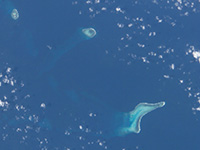Maritime and territorial disputes in Asia could trigger a military conflict between China and the United States. China has been quarreling with Japan and the Philippines over islands and islets in the East and South China Seas and the United States is a central actor in those disputes: Although Washington itself does not have territorial claims in the waters, the global naval power has a strong “self-interest in preserving the freedom of navigation in the region”. More important, the United States has alliance ties with Japan and the Philippines and could be entangled in the allies’ conflict with China.
Tongfi Kim focuses on those alliance obligations in the new PRIF Report No. 141 “US Alliance Obligations in the Disputes in the East and South China Seas: Issues of Applicability and Interpretations”. He describes the alliance agreements that could apply to the disputes and assesses what the treaty texts say and how the involved actors interpret them. He discusses how the disputants and the United States understand the overall alliances and how they judge their applicability to the disputes.
PRIF Report No. 141 is available as free PDF and a printed copy can be ordered at PRIF for 10€.
Recommendations for further reading:
Peter Kreuzer: Zwei Regierungswechsel und ein Urteil: Die Philippinen und Taiwan im Konflikt um das Südchinesische Meer, HSFK-Report Nr. 10/2016, Frankfurt/M., 2016. [German only]
Reinhard Drifte: Japan’s Policy towards the South China Sea – Applying “Proactive Peace Diplomacy”?, PRIF Report No. 140, Frankfurt/M., 2016.
